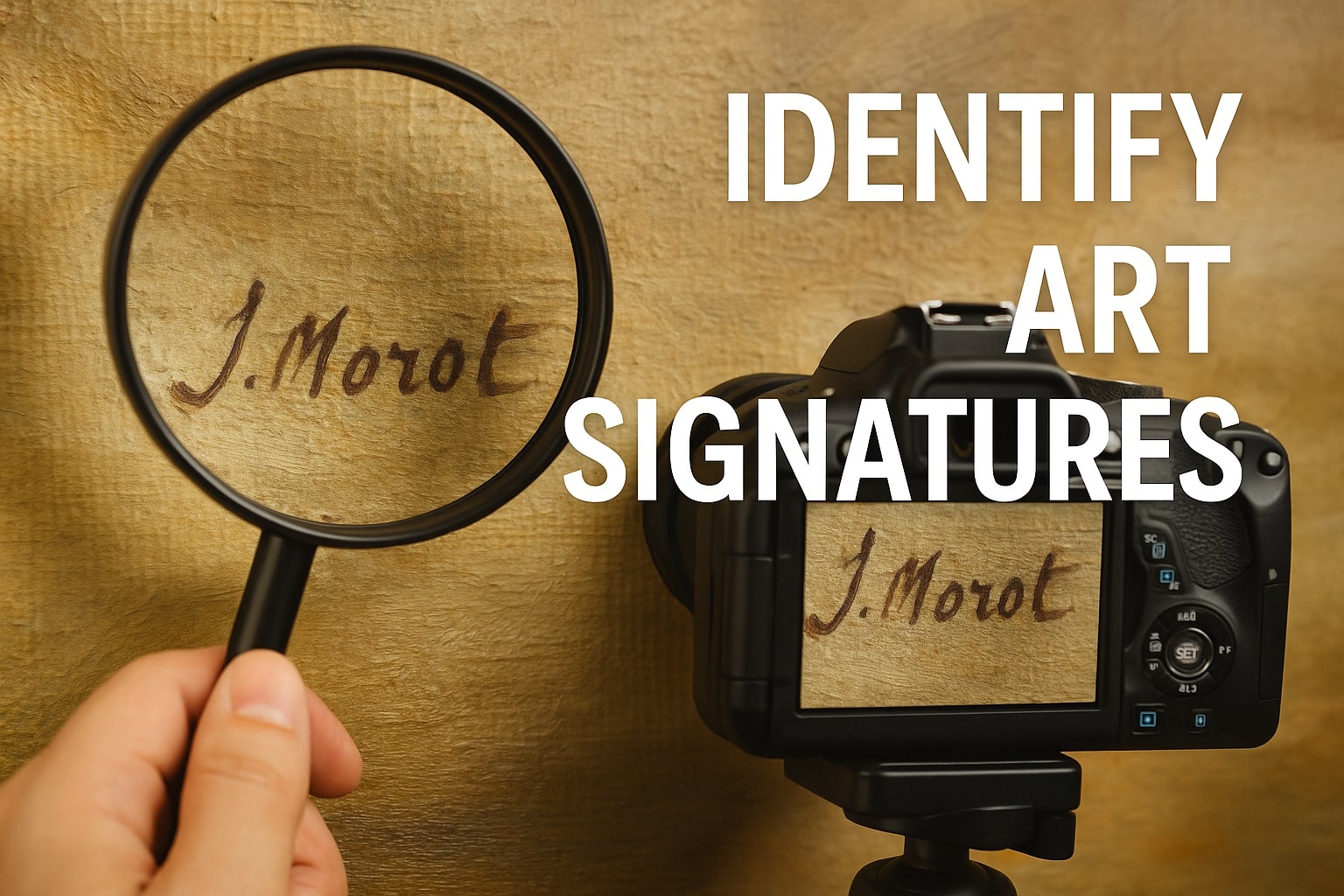The Cosmic Scroll: Unlocking a Sacred Burmese Treasure
By Michael Vallone, Founder of Goodson Gallery
17 minute read
While reviewing the estate of a German antique dealer, I came across a scroll that caught my attention. Modest in form but rich in detail, it featured Burmese script on one side and colorful Buddhist imagery on the other.
After further research, I identified it as a Burmese Buddhist protection scroll — likely dating back over 250 years. These scrolls were traditionally created to offer blessings, convey important teachings, and provide spiritual protection.
What makes this particular piece unique is its completeness and clarity. It contains full versions of the Mangala Sutta, Metta Sutta, and Ratana Sutta, along with traditional protective chants and astrological symbolism.
Now translated in full for the first time, this scroll offers a meaningful glimpse into Southeast Asian spiritual life and scriptural tradition. I’m pleased to share both the translation and historical context through Goodson Gallery.
Historical Background: Burmese Buddhist Scrolls and the Voice of Protection
Throughout 18th- and 19th-century Burma (now Myanmar), Buddhist monks and scribes produced sacred scrolls to shield devotees from both spiritual and worldly dangers.
Handwritten and hand-painted, these scrolls were far more than decorative objects; they were talismans of profound spiritual power.
Infused with the teachings of the Buddha, fortified with protective paritta verses, and encoded with astrological wisdom, a scroll like this served as a bridge between the visible and the invisible — a shield against misfortune, illness, evil spirits, and untimely death.
Scrolls of this kind were often personalized for wealthy patrons, monks, royal courts, or even entire villages, invoking blessings over homes, families, and futures.
The tradition blended Theravāda Buddhist orthodoxy with Burmese astrological beliefs, creating documents that were at once deeply doctrinal and vividly mystical.
Our scroll, found halfway across the world, survived decades hidden away — its protective energy quietly intact, waiting to be reawakened.
Textual Analysis: Sacred Words of Power
The text side of the scroll opens with a formal invocation to the Triple Gem — the Buddha, the Dhamma (his teachings), and the Sangha (the monastic community). These opening lines are meant to sanctify the scroll itself, establishing it as a sacred object and inviting protection upon the space, the reader, and all beings in its presence.

1. The Mangala Sutta – Discourse on Blessings
At the heart of the scroll lies one of the most widely respected teachings of the Buddha: the Mangala Sutta. In it, the Buddha outlines a complete path of spiritual and worldly well-being in the form of 38 sequential blessings.
These blessings range from external conditions — such as living in a suitable place and associating with the wise — to internal development, including patience, humility, and disciplined conduct. The sutta culminates in the highest blessing: realizing Nibbāna, the liberation from the cycle of suffering.
In Burmese Buddhist tradition, the Mangala Sutta is often chanted as a foundational text for both spiritual practice and protection. Its inclusion on the scroll signals a desire not just for safety, but for holistic well-being and eventual awakening.
2. The Metta Sutta – Discourse on Loving-Kindness
Following the blessings, the scroll presents the Metta Sutta, a poetic and practical guide to cultivating boundless loving-kindness (mettā). This revered teaching outlines the qualities of one who walks the path peacefully — content, gentle, humble — and expands into a powerful universal prayer:
“May all beings be happy. May all beings be safe. May they live with ease.”
The sutta encourages the practitioner to radiate goodwill to all beings — near and far, seen and unseen — without exception. Its presence on the scroll reflects the role of compassion as both shield and aspiration, harmonizing with the protective elements that surround it.
3. The Ratana Sutta – The Jewel Discourse
The scroll continues with the Ratana Sutta, known as the Discourse on the Jewels — a text traditionally recited during times of illness, unrest, or spiritual uncertainty.
In this chant, the Buddha praises the unique power and protection offered by the Three Jewels:
- The Buddha — incomparable among beings
- The Dhamma — timeless, uncorrupted, and liberating
- The Sangha — those who walk the path with integrity
Each verse concludes with the refrain:
“In this truth, may there be well-being.”
This formula establishes a ritualized invocation of safety, based not on superstition, but on the power of awakened truth. It reinforces the scroll’s purpose: not only to instruct, but to safeguard.
4. Parittas – Protective Verses
The core of the scroll’s protective power lies in its collection of Parittas — traditional verses meant to guard against worldly dangers.
Each chant is precise in its intention:
- Protection from Fire – Calling upon the Buddha’s serenity to repel heat and destruction
- Protection from Disease – Using Dhamma as medicine to restore balance and health
- Protection from Water and Flood – Evoking the Buddha’s passage across waters as a metaphor for spiritual and physical safety
- Protection from Spirits and Unseen Forces – Appealing to devas, ancestors, and elemental spirits for harmony and peace
These verses blend mythic language with deep devotional sincerity, and were often recited aloud in ceremonies, written on palm leaves, or carried by travelers. Here, embedded in the scroll, they offer a layer of metaphysical armor.
5. Merit Dedication and Universal Blessing
The scroll concludes with a Merit Dedication (pattidāna) — a deeply compassionate Buddhist practice of transferring any positive spiritual benefit from reading or chanting the scroll to others.
This includes:
- Departed relatives
- Teachers from past and present lives
- All sentient beings, including unseen spirits
It is followed by a universal blessing, echoing the tone of the Metta Sutta:
May all beings be happy. May all beings be free from suffering.
This final passage completes a sacred cycle:
Blessing ➝ Protection ➝ Compassion ➝ Dedication ➝ Liberation
The result is not just a scroll to be admired — but a living spiritual document, designed to shield the body, instruct the mind, and expand the heart.
Artistic Analysis: A Map of the Invisible Cosmos
Turning to the artwork side, the scroll bursts into color, symbolism, and celestial beauty.
At the top, five seated Buddhas — Kakusandha, Koṇāgamana, Kassapa, Gotama (the historical Buddha), and Metteyya (the Future Buddha) — radiate calm across the universe, linking past, present, and future teachings.

Beneath them spin two magnificent astrological wheels.
In the upper wheel, the Buddha sits serenely at the center, surrounded by human figures offering homage, while animals and celestial beings orbit at the edges — a vision of the cosmic order harmonized by Dharma.
In the lower wheel, the imagery intensifies.
Here, the wheel symbolizes Samsāra — the endless cycle of birth, death, and rebirth. Figures of humans, animals, and deities swirl in karmic motion, each driven by actions, desires, and destiny.
Below the wheels, a second row of zodiac animals appears: dragon, garuda, mouse, tiger, elephant, cat — each rendered with tender precision, each carrying a weight of astrological meaning.
Together, the scroll creates an axis of protection and liberation, with the Buddha unmoved at the still center, while the world spins in ceaseless motion.
Astrological Analysis: The Power of Birth and Stars
In Burmese tradition, astrology is more than superstition — it is woven into the very fabric of reality.
The scroll’s zodiac animals correspond to the eight planetary days of the Burmese week:
Sunday, Monday, Tuesday, Wednesday morning, Wednesday afternoon, Thursday, Friday, and Saturday.
Each day aligns with a celestial animal:
the mighty Naga (dragon) for Saturday-borns, the clever Mwe (mouse) for Wednesday mornings, the fierce Chinthe (lion/tiger) for Mondays, and so forth.
These birth signs were believed to influence:
- One’s character
- Strengths and weaknesses
- Destiny in this life and future rebirths
To know your animal was to know your karmic compass.
But this scroll does more than depict zodiac animals.
By placing them around the Buddha — the immovable center — it visually teaches that while the stars influence the cycles of life, only the Dhamma leads beyond them.
In a world governed by karmic patterns and celestial forces, the Buddha offers the only true freedom.
The Zodiac Animals: The Guardians of Destiny

Encircling the great wheels of the scroll are carefully painted figures — not mythical beasts alone, but profound symbols of birth and becoming.
Each animal represents a planetary deity and birth influence in Burmese astrology:
| Day | Planet | Zodiac Animal | Traits |
|---|---|---|---|
| Sunday | Sun | Garuda (Mythical Bird) | Nobility, leadership, vision |
| Monday | Moon | Tiger | Courage, strength, determination |
| Tuesday | Mars | Lion (Chinthe) | Power, pride, assertiveness |
| Wednesday Morning | Mercury | Elephant | Wisdom, calmness, stability |
| Wednesday Afternoon | Rahu | Mouse | Cleverness, adaptability, secrecy |
| Thursday | Jupiter | Rat | Intelligence, wealth, fortune |
| Friday | Venus | Guinea Pig | Charm, gentleness, grace |
| Saturday | Saturn | Dragon (Naga) | Mystery, endurance, spiritual depth |
But these are not mere mascots.
Each animal represents the subtle gravitational pull of the universe on the mind and destiny of every being.
In traditional Burmese thought, knowing one’s zodiac animal — knowing the planet under which you were born — was essential for:
- Understanding your character
- Anticipating your karmic tendencies
- Choosing the best times for rituals, travels, or important life decisions
The animals are not there to control fate — they are there to reveal it.
The Eight Days of the Burmese Week: A Time Beyond Time
One of the most curious and brilliant aspects of Burmese astrology is its division of the week into eight planetary days, rather than the seven we know in the West.
✅ Why eight days?
Because Burmese cosmology recognized that Wednesday splits into two parts:
At noon on Wednesday, the planetary forces change dramatically —
from clear rational Mercury to shadowy, obsessive Rahu.
Thus, the week is not a smooth flow — it pivots and tilts midstream, like a river encountering a hidden whirlpool.
| Time | Influence | Symbol |
|---|---|---|
| Wednesday Morning | Mercury (Planet of communication and speed) | Elephant |
| Wednesday Afternoon | Rahu (Shadow Planet of desires and disruptions) | Mouse |
This division teaches a profound lesson:
Time is not linear.
Change can come at unexpected moments.
Awareness must be constant.
By marking this division, Burmese astrology emphasizes that life’s currents are subtle and demand careful navigation.
In your scroll, the eight animals do not simply orbit the Buddha; they spiral outward from him — showing that all beings, born under all conditions, are held within the greater law of Dharma.
The Wheels of Fate: Samsāra Painted in the Stars
The twin circular diagrams on the scroll — the two great wheels — are more than astrological charts.
They are mandalas of becoming.
| Wheel | Meaning |
|---|---|
| Top Wheel | Cosmic Order — the visible universe influenced by stars, planets, and birth signs |
| Bottom Wheel | Samsāra — the invisible cycle of birth, aging, death, and rebirth driven by karma |
In the upper wheel:
- The Buddha sits unmoved at the center.
- Around him whirl the days, the animals, the planets, and the beings — humans, devas, spirits.
In the lower wheel:
- The movement is more chaotic — beings rise and fall through births and deaths, fortunes and misfortunes.
✅ Together, the wheels teach a layered truth:
- The stars influence but do not dictate.
- Karma shapes but does not bind.
- The Dharma liberates.
Only by recognizing the forces at work — both seen and unseen — can a being escape the endless orbit of becoming.
The Astral Guardians: Deities and Protectors

Flanking the Buddha, and scattered throughout the wheels, are celestial guardians — beings that in Burmese Buddhism serve dual roles:
- As protectors of the faithful
- As reminders of the cosmic forces that surround and pervade existence
These guardians are often associated with:
- The Four Great Kings (Lokapālas) who protect the cardinal directions
- Planetary deities who grant blessings to the devout
- Spirit protectors of mountains, rivers, and sacred places
They represent the compassionate structure of the universe —
a cosmos not of chaos, but of order, intelligence, and hidden support for those who seek wisdom.
Conclusion: A Star Map for the Spirit
At Goodson Gallery, we often describe this scroll as a “living voice” — but it is equally fair to call it a living sky.
Every line, every circle, every animal, every color is part of a vast astral map, whispering to the viewer:
- Know your birth.
- Understand your destiny.
- Master your mind.
- Transcend the wheel.
This scroll does not promise that the stars will save you.
It shows that understanding the stars is the first step toward saving yourself.
In its quiet, patient art, it reminds us that the greatest astrology is not written in the heavens —
it is written in the awakened heart.
Numerological Analysis: Sacred Numbers in the Scroll
The scroll is not just painted and written — it is designed around sacred numbers:
- 5 Buddhas at the top represent the past, present, and future continuum of enlightenment.
- 8 days of the Burmese astrological week mirror the Noble Eightfold Path.
- 12 divisions in the wheels echo the 12 links of dependent origination — the Buddhist teaching on how suffering arises.
- 38 blessings in the Mangala Sutta symbolize the spiritual steps toward liberation.
Every number has meaning.
Every division reinforces a cosmic truth.
The scroll, at its deepest level, is not random art —
it is a numerological mandala, a diagram of the entire Buddhist worldview encoded in symbols and sacred geometry.
Today, let’s step inside the mathematics of awakening.
The Number 5: The Buddhas and the Journey of Existence
At the top of the scroll, five serene Buddhas sit in eternal calm:
- Kakusandha
- Koṇāgamana
- Kassapa
- Gotama (the historical Buddha)
- Metteyya (the future Buddha)
Five is no accident here.
In Buddhist cosmology, 5 is the number of the human experience.
It represents the Five Aggregates (Khandhas) that form what we mistakenly call a “self”:
- Form (body)
- Feeling (emotions)
- Perception (recognition)
- Mental Formations (thoughts)
- Consciousness (awareness)
Each aggregate is a process — impermanent, empty of self — and understanding them leads to wisdom.
By honoring the Five Buddhas, the scroll visually reminds the devotee:
You are not a static being. You are a flow of five dynamic processes, and liberation lies in seeing through them.
The Number 8: Zodiac Animals and the Path Beyond Fate
Encircling the scroll’s cosmic wheels are familiar — yet slightly strange — figures:
Mouse, Tiger, Elephant, Naga, and more.
They represent the Eight Days of the Burmese Week — a system essential to Burmese astrology.
Here’s the fascinating detail:
| Day | Planetary Ruler | Zodiac Animal |
|---|---|---|
| Sunday | Sun | Garuda |
| Monday | Moon | Tiger |
| Tuesday | Mars | Lion |
| Wednesday Morning | Mercury | Elephant |
| Wednesday Afternoon | Rahu (North Lunar Node) | Mouse |
| Thursday | Jupiter | Rat |
| Friday | Venus | Guinea Pig |
| Saturday | Saturn | Dragon |
✅ Wednesday is divided into two days — morning and afternoon — because ancient Burmese astrologers believed that the influence of Mercury splits at noon, and a new planetary energy (Rahu) takes over.
Thus, 8 days, 8 planetary energies, and 8 zodiac signs.
But look deeper:
The number 8 also points to The Noble Eightfold Path, the Buddha’s map out of suffering:
- Right View
- Right Intention
- Right Speech
- Right Action
- Right Livelihood
- Right Effort
- Right Mindfulness
- Right Concentration
The scroll teaches us this hidden truth:
- Your birth day gives you a starting destiny (your astrological sign).
- But only through the Eightfold Path can you rise above destiny and escape the endless cycle of rebirth.
Astrology tells you where you are born.
The Eightfold Path tells you how to be reborn no more.
The Number 12: Wheels Within Wheels
The grand circular diagrams on the scroll are divided subtly into 12 sections —
echoing another of Buddhism’s most profound teachings: The Twelve Links of Dependent Origination (Paṭiccasamuppāda).
These links describe how suffering is created in the human experience, step by step:
- Ignorance
- Volitional formations
- Consciousness
- Name-and-form
- Six sense bases
- Contact
- Feeling
- Craving
- Clinging
- Becoming
- Birth
- Aging and death
✅ Twelve is the full machinery of Samsāra.
The scroll artistically encodes this idea:
While the zodiac spins with the planets and signs, the deeper wheel is spinning through birth, aging, and death — life after life — until wisdom breaks the cycle.
Why 8 Days? The Cosmic Reason
Ancient Burmese cosmology divides time differently than the modern world.
They believed that planetary energies shifted significantly by midday on Wednesday, splitting that day into:
- Morning (Mercury — quickness, cleverness)
- Afternoon (Rahu — desire, disruption, hidden forces)
Thus, eight planetary deities rule over time, not seven.
This fits perfectly with Buddhist symbolism:
- 8 spokes on the Dharma wheel
- 8 days of the astrological week
- 8 steps on the path to liberation
✅ Eight is a number of movement, destiny, and awakening.
The scroll maps the heavens not just to predict fortune — but to remind the devotee that time itself is a spiritual training ground.
The Scroll as a Mathematical Mandala
In the rare Burmese Buddhist scroll now preserved by Goodson Gallery, numbers are not decorations.
They are keys — opening hidden doors of understanding.
- 5 Buddhas mirror the 5 aggregates of self.
- 8 zodiac animals and days mirror the 8fold path beyond fate.
- 12 divisions of the wheels mirror the 12 links binding beings to suffering.
Each layer teaches the same essential truth:
Everything conditioned is impermanent. Everything born will die. Liberation lies in knowledge, in discipline, in compassion, in letting go.
What might seem at first like an old scroll of ink and paper reveals itself to be a cosmic clock, ticking through the mysteries of existence — and pointing always, always, toward the stillness beyond the spin.
Religious Analysis: The Journey from Protection to Liberation
At its core, this scroll embodies the full Buddhist path:
- Protection from worldly dangers through devotion
- Blessings of health, happiness, and prosperity
- Merit generated and shared selflessly with others
- Universal Loving-Kindness extended to all beings
- Astrological Forces acknowledged but transcended
- Karma and Samsāra depicted as conditions to be understood and overcome
- Liberation through the teachings of the Buddha
It is at once practical and transcendent.
It recognizes the real dangers of life — disease, violence, famine, bad fortune —
but refuses to stop there.
Through prayer, art, astrology, and compassion, it points unwaveringly toward the end of all suffering — Nibbāna, the final, perfect peace.
Conclusion: A Living Voice Across Time
Finding this scroll in a forgotten German library felt like fate.
Here, hidden in dust and silence, was a voice from another world — a voice that once sang protection over families, once blessed monks on their journeys, once wrapped entire villages in unseen spiritual armor.
Today, in the hands of Goodson Gallery, it breathes again.
This scroll is not merely a religious artifact or a beautiful work of art.
It is a living document of cosmic understanding — a testament to how the human spirit seeks safety not only from fire, flood, and blade, but also from hatred, ignorance, and suffering itself.
It teaches us that while the stars above and the creatures of the earth shape our conditions, they do not chain us.
At the still center of all things, beyond the spin of zodiac wheels and the cycle of rebirth, sits the serene figure of the Buddha — inviting us to awaken, to be free.
In an age where much is forgotten and meaning often fades into noise,
this sacred scroll endures — a luminous thread stretched across centuries, across cultures, across lives.
A reminder that protection, compassion, and liberation are not dusty ideals — they are living forces, available to anyone who chooses the path.
At Goodson Gallery, we are honored to preserve this voice — and to share it with a world that still, perhaps now more than ever, needs to hear its song.
🖋️ – Mike Anthony Vallone
Founder of Goodson Gallery
📜 You’ve Made It This Far
If you’ve read to the end, you understand the rarity and depth of this artifact.
A limited number of full English translation PDFs have been prepared for collectors, scholars, and those interested in the sacred text in its entirety.
👉 Request your copy of the complete, professionally translated scroll — including all suttas, protective chants, and historical annotations.
Request Full Translation(Limited availability.)
18th-19th Century Burmese Buddhist Protection and Astrology Scroll
Unlock a rare treasure of Buddhist art and spiritual history. This 18th–early 19th-century Burmese Buddhist protection scroll features complete sacred prayers, rare astrological artwork, zodiac animals, and cosmological diagrams. Fully translated and professionally documented by Goodson Gallery, this 5-foot scroll offers a unique blend of protection, blessing, and cosmic wisdom. Includes Certificate of Authenticity and full historical analysis.













Good
Good